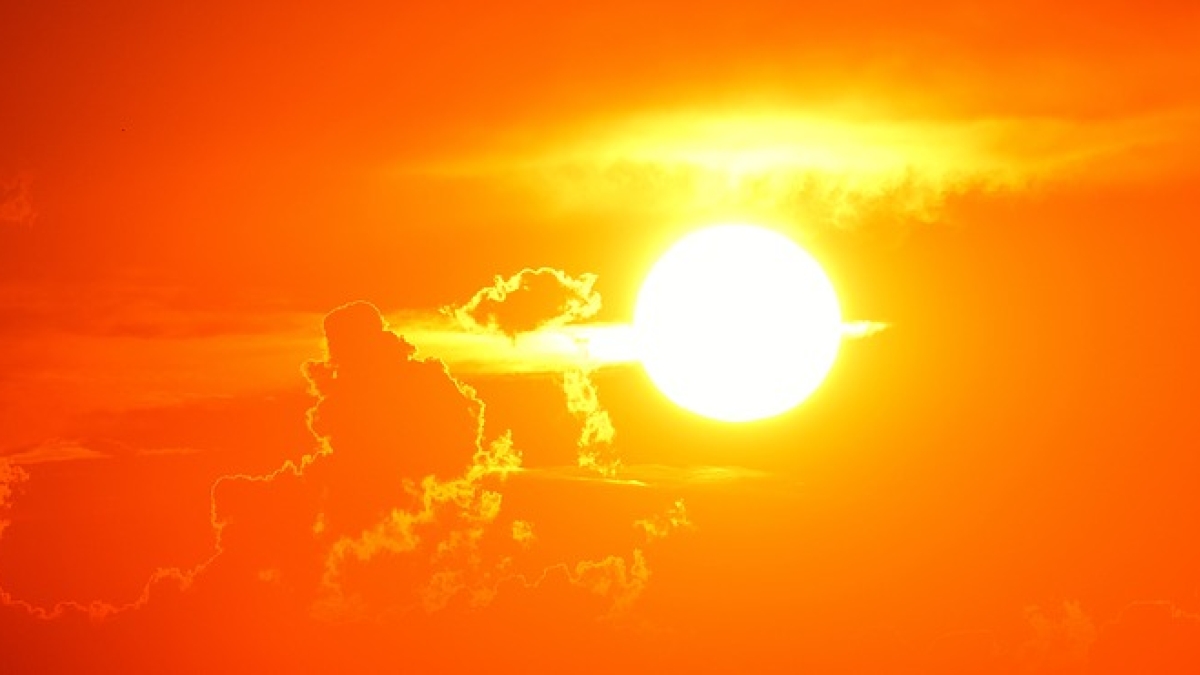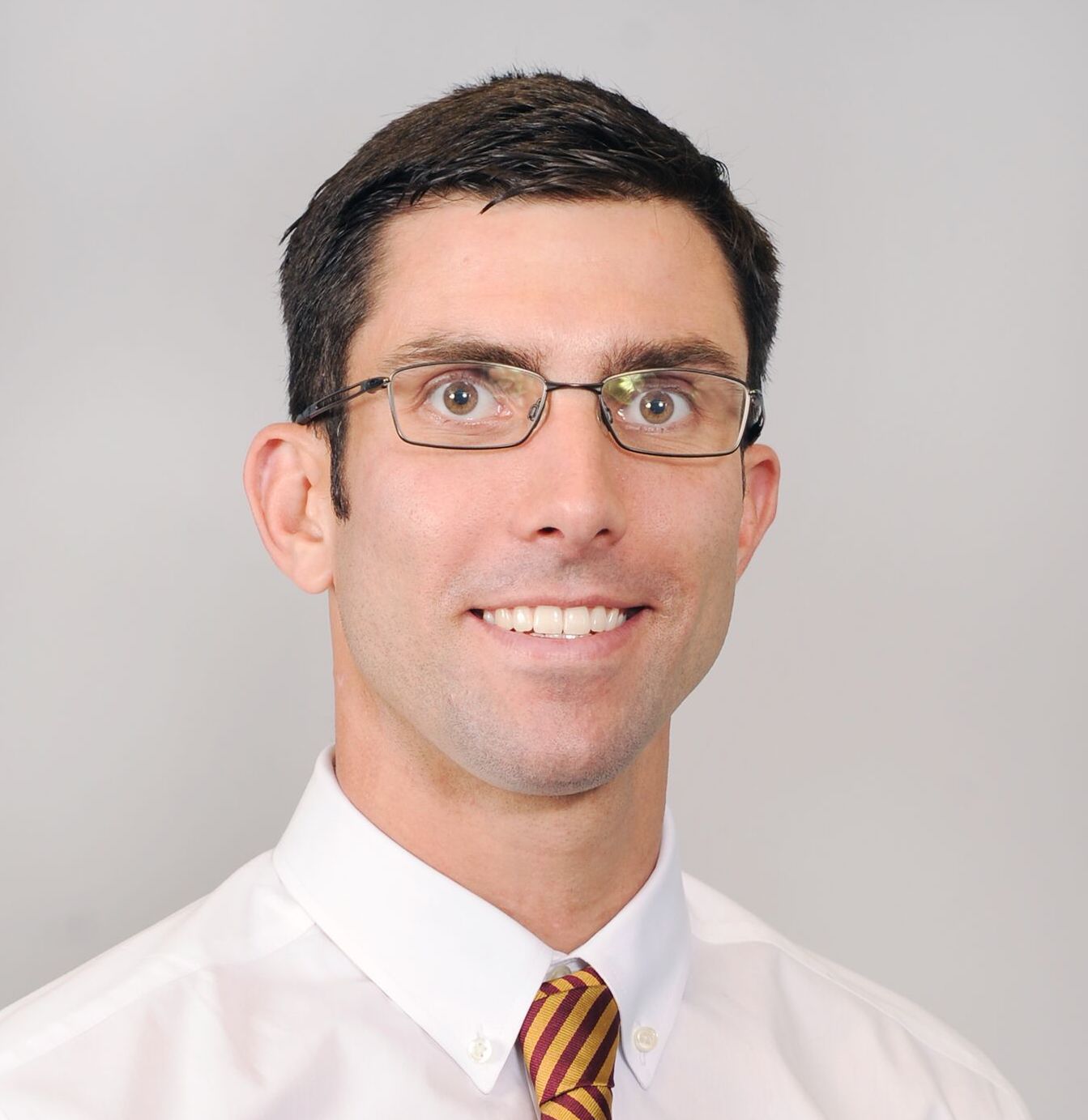Nighttime in Phoenix is getting hotter, and it’s not just Old Town Scottsdale's nightlife scene.
According to scientists, Phoenix has become a hotter place to live at night due to climate change and urban sprawl. In the last half century, nighttime temperatures have increased almost 9 degrees, and the Valley averages more than 100 days a year with temperatures reaching over 100 degrees.
And more bad news: The next 30 years could see nighttime temperatures rise another 12 degrees and see a 300 percent increase in heat-related deaths, according to researchers at Arizona State University’s School of Geographical Sciences and Urban Planning. If this keeps up, could Phoenix wind up being the new Death Valley or just an unpleasant place to live?
David Hondula
ASU Now tapped David Hondula, an assistant professor in the School of Geographical Sciences and Urban Planning and a member of ASU’s Urban Climate Research Center, for answers.
Question: What are the elements causing Phoenix to become a hotter place to live at night?
Answer: The research community has a lot of confidence that the future of Phoenix, and many other cities, looks hotter than the present. That being said, it's important to remember that there is still a relatively wide envelope in projections of exactly how much warmer it will be three decades from now, especially for the most extreme temperatures. Models have a more difficult time projecting extremes than they do seasonal averages. We have observed and expect to see continued gradual warming of our summertime temperatures, especially at night, and a lengthening of the summer season. We have not seen as much of a change in our most extreme heat, and our all-time high temperature record of 122 Fahrenheit has stood for nearly 30 years.
Projecting health and other societal impacts associated with that warming is a more complex undertaking; most projections, including the one you reference, do not take into account possible societal adaptation measures. I am optimistic that we will be able to continue what we have observed over the last few decades in the United States and other developed countries despite ongoing warming — decreasing heat-related deaths.
Phoenix and the metropolitan area have warmed and will continue to warm for two main reasons. First, we've changed the landscape tremendously with the growth of our cities, expansion of roads and parking lots, use of vehicles, and release of heat into the air from air-conditioning units and other machines. These conveniences come with a significant tradeoff known as the urban heat effect that causes our city to be several degrees warmer than the surrounding desert at night (although there is little difference during the day). Second, many places on the planet are warming associated with global-scale climate change, and the Southwest of the United States is certainly among them.
Q: We count on the nighttime temperatures to give us a respite from a hot day. What will hotter nighttime temperatures in the next 30 years mean for Phoenix residents?
A: Warmer nights is one of the most common observations we hear from long-term residents when we ask them if they think the weather is any different now than it was when they were younger. We hear anecdotes that suggest that warmer nights cause people to have lower sleep quality, more fatigue, more stress and a lower quality of life.
This is an important topic for us to make a larger investment in as a research community — we simply do not have a rigorous evidence base to make robust predictions of the health consequences of continued nighttime warming. There are obvious potential consequences of nighttime warming including higher energy demand for cooling and decreased thermal comfort for those partaking in overnight and early morning outdoor activities. Fortunately, we can take actions to offset at least some of these impacts, but we need to ensure that we have effective communication strategies and sufficient public resources so that everyone can learn about and take advantage of programs like home weatherization and upgrades to higher-efficiency cooling devices.
Q: The cost of energy immediately comes to mind. Will it take more to keep Phoenix cool, and will those air-conditioning bills head into the stratosphere?
A: It should be no surprise to readers from the Phoenix area that ASU surveys repeatedly demonstrate energy costs, and costs associated with repairs to air-conditioning systems, as significant barriers to staying cool in one’s home in the summer. What we've also learned through surveys and interviews is that many residents have questions about how to optimize their home-cooling strategies, especially when it comes to using the thermostat.
Between home weatherization, energy-efficiency improvements and finding the right thermostat schedule that keeps costs down, I think we have a lot of opportunities to keep air-conditioning bills from drifting substantially higher even if the temperature does. But we need to be more intentional and aggressive in supporting and promoting the appropriate programs, and we hear encouraging signs from many of our partners in city government and community agencies that we are moving in the right direction.
Q: What are some things residents can do now to brace for or mitigate warmer temperatures in the summer?
A: Summer heat in Phoenix is a health risk for everyone, and we all have a role to play in helping our community be more resilient and safer when extreme heat occurs. Even the most fit and hearty individuals in the community can find themselves in harm's way — we need to be sure that we each treat heat with the same vigilance that our neighbors in northern states treat cold. We need to be comfortable with the idea that we might need to take a break or get into a cooled and shaded space on a hot summer day, and follow the advice from our health departments and the weather service about staying hydrated, avoiding vigorous activity during the hottest part of the day, and recognizing early symptoms of heat illness when they occur.
We can also help others in our community who are more likely to find themselves in harm’s way on a hot day. Checking on neighbors, and even the important act of simply knowing who are neighbors are, can pay huge dividends. We can also contribute to local energy assistance programs and water drives. Supporting community shelters is critically important, as people experiencing homelessness suffer heat-related illness and death at a much, much higher rate than any other social groups in our area. Carrying an extra bottle of cold water to hand to someone who might be in need is always a good choice. Finally, our city and county governments and other partners like the Nature Conservancy are really stepping up their efforts to address heat in all sorts of different ways. The success of those programs will ultimately depend on public input and support, and residents can keep working to make their voices heard when it comes to ways that local government can help keep people safe and the places where we live, work, and play comfortable, even on our hottest days.
Q: Can Phoenix still be a livable place in 30 years given that it will be much warmer and require more energy and water?
A: I don’t buy into the narrative that Phoenix is going to be unlivable in 30 years, or even beyond that. There are so many indicators that Phoenix is thriving and can continue to thrive, even with our hot weather. Fewer places around the country are seeing the type of population growth that we are, and developers and builders are making major investments in commercial, residential and industrial real estate. Just out my window on the Tempe campus I’ve witnessed the construction of multiple high-rise apartment and mixed-use buildings. These are long-term commitments. I don't think that people moving to Phoenix or investing in Phoenix are oblivious to the fact that we experience extreme heat and that the future is likely to be even warmer.
City governments and regional agencies are staffed with some incredibly talented people who concentrate every day on ensuring the long-term reliability of our energy and water supply. Even with our growth, we’re seeing rapid improvements in our ability to manage and conserve both water and energy. In fact, in Phoenix total water consumption is lower today than it was in the 1990s, even though our population has increased by more than 10 percent. Other cities around the country and around the world are looking to our region for leadership in innovation around climate resilience and adaptation. We certainly don't have everything figured out just yet, especially when it comes to ensuring that our region can be a livable place for everyone. But we are making many positive steps forward each day.
ASU's Urban Climate Research Center employs a collaborative social/physical science framework to address critical issues in the urban atmospheric environment. It is affiliated with the School of Geographical Sciences and Urban Planning and the Julie Ann Wrigley Global Institute of Sustainability. Learn more at https://sustainability.asu.edu/urban-climate.
More Health and medicine

Reducing waste in medical settings
Health care saves lives, but at what cost? Current health care practices might be creating a large carbon footprint, according to ASU Online student Dr. Michele Domico, who says a healthier…

ASU offers bilingual counseling to Spanish speakers
Arizona is one of the five states in the nation with the highest percentage of Hispanic residents, according to the U.S. Department of Health and Human Services Office of Minority Health, and …

College of Health Solutions launches first-of-its-kind diagnostics industry partnership to train the workforce of tomorrow
From 2007 to 2022, cytotechnology certification examinees diminished from 246 to 109 per year. With only 19 programs in the United States, the cytology workforce that stands at the front line of…



